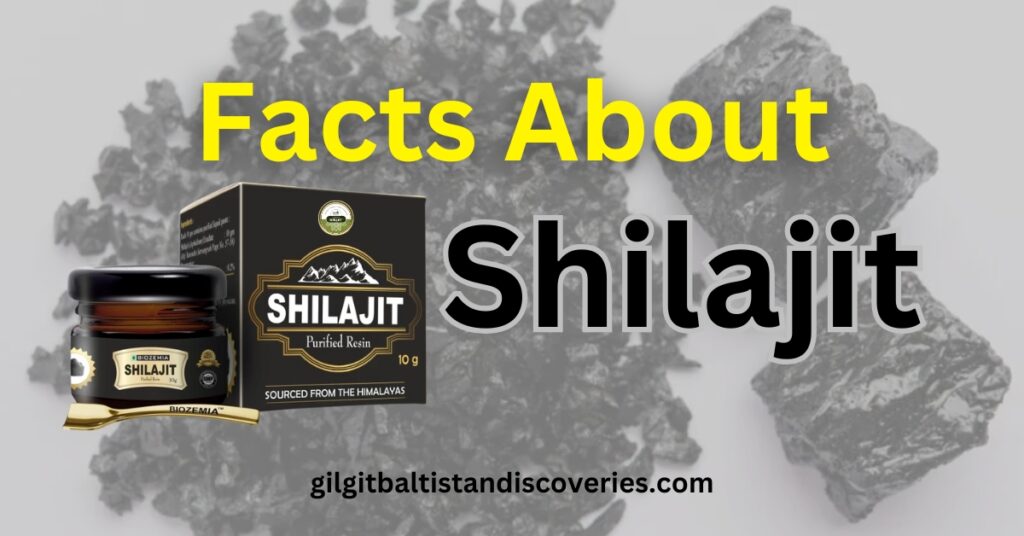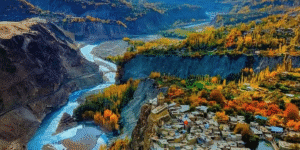Shilajit is a remarkable organic mineral resin that has been revered for centuries for its exceptional health benefits. Celebrated across cultures from Pakistan to Central Asia, Shilajit is significant in traditional medicine and wellness practices. In this article, we will look at the intricacies of Shilajit extraction and explore its profound relevance to Pakistan, particularly in the beautiful region of Gilgit-Baltistan.
Buy 100% Aftabi Salajeet- Whatsapp Now: 0336-7403234
What is special about this ancient substance, and how do these mountain people extract it from their mountains?
Furthermore, explores the process of Shilajit extraction, its historical significance, and scientific insights. You also discover why it is one of today’s most mysterious remedies.
Read More: Chocolate Rock Skardu
Table of Contents
ToggleWhat is Shilajit?
Shilajit is derived from the Sanskrit word for “conqueror of mountains.” It is a sticky, dark extract. Its historical and modern significance makes the subject particularly interesting. In Pakistan, especially in Gilgit-Baltistan, Shilajit presents the glory of nature but also forms an integral part of the local tradition.
Historical and Cultural Importance of Shilajit Extraction
Shilajit was used over 4,000 years ago in traditional medicine. Cultures from Afghanistan, India, Iran, and China used to hold it up on a base for its medicinal value. Moreover, Shilajit is used to cure many diseases, as inferred from ancient texts and scholars, such as Aristotle, Razi, Biruni, and Ibn Sina.
As far back as the early 19th century, the French orientalist Antoine Galland D’Herbelot accounts for what the Persians called “mumiay” or “mummy”. However, the old stuff used to cure broken bones and other diseases speaks to Shilajit’s age-long reputation as a healing material.

In Pakistan, particularly Gilgit-Baltistan, Shilajit is also used within many local traditions and practices, and therefore, it reflects its long-standing importance in the region.
Best Seasons to Extract Shilajit
Shilajit, a natural substance found in the Himalayan mountains, is traditionally harvested during specific seasons for optimal quality. The best times for extraction are generally:
- Spring (March to May): This season is ideal for collecting Shilajit as the melting snow increases moisture and the temperature rises. The warmer weather facilitates the seepage of Shilajit from the rocks, making it easier to harvest.
- Early Summer (June to July): Following the spring thaw, the early summer months continue to provide favourable conditions. The increased rainfall enhances the flow of Shilajit, allowing for better extraction.
- Autumn (September to October): In some regions, autumn can also be a good time for harvesting Shilajit, particularly before the onset of winter. The cooler temperatures help maintain its quality, and the residue left from summer rains can facilitate collection.
Note: Avoid extracting Shilajit during the winter months, as the cold temperatures and snowfall hinder its availability and quality.
How to Extract Shilajit?
The Shilajit is extracted through a long and complex process involving several lengthy and complicated procedures. Hence, it is highly complex and valuable. Traditional medicine uses it because of its organic and mineral content, which forms over centuries in high-altitude areas.
Geographical Locations
Shilajit extraction starts from the most inaccessible regions on earth. Shilajit in Pakistan is the product of Gilgit-Baltistan, known for its best quality Shilajit. Himalayas, Karakoram Range, and Pamir Mountain ranges are also prominent sources with different features of this ancient resin.
Collection-Shilajit Extraction
The process begins with identifying Shilajit deposits in rocky crevices inaccessible to known routes. Collectors venture through a harsh landscape to collect this dark, sticky resin. Additionally, the precision of collecting it should be perfect to ensure its purity without adulteration.
Cleaning-Shilajit Extraction
After gathering Shilajit, the harvester cleans it thoroughly to remove all soil, rocks, and dirt. Then prepare the pure resin for the next processing stages.
Purification-Shilajit Extraction
After cleaning, harvesters filter the Shilajit resin and water mixture to remove debris. Then, they keep it in a warm place or an oven for the liquid to evaporate and remain solid Shilajit.
Drying and Processing-Shilajit Extraction
The Shilajit dries and is processed to make it in various forms, such as powders and capsules. Each step is significant since it decides how the resin will end with quality and potency.
Shilajit Extraction Challenges
Shilajit is not an easy substance to extract. Extracting it from remote places and hostile terrains is indeed no piece of cake. Moreover, variations in the quality coming from different sources require very sensitive processing to get the same kind of quality.
However, a process of extraction combining ancient techniques with modern precision is Shilajeet extraction. The difference from every step-from collection to purification-reflects effort. Knowing the process reveals why, despite the differences and technology of the present day, Silajeet still finds acceptance in both the traditional and modern spheres.
Benefits of Shilajit
Shilajit is a health-beneficial herb, and some of the benefits include:
- Energy and Vigor: By assuming that Shilajit improves energy, the body’s physical activities will be strengthened through increased cellular function and metabolism.
- Brain Health: The presence of fulvic acid in Shilajit benefits brain health, including better memory and increased cognitive ability.
- Anti-aging: Shilajit, rich in antioxidants, prevents oxidative stress caused by free radical overproduction and cellular damage.
- Immune Support: Mineral content and organic compounds in Shilajit may increase immunities and have overall health resilience.
Shilajit is also believed to have benefits in joint strengthening and anti-inflammation. Hence, it aids those who are suffering from arthritis.
Composition of Shilajit
Shilajit is often described as having a look and consistency of mineral tar or resin, though neither can be said to belong to that category. Dark brown to nearly black, this highly viscous liquid is water soluble but not ethanol. The composition is thoroughly complex and diversified, depicting richness and diversity.
Minerals
Shilajit has higher proportions of calcium, magnesium, sodium, iron, chromium, and lead. All these elements are responsible for the phenomenal properties of Shilajit and medicinal use.
Organic Compounds
The resin includes solid paraffin hydrocarbons, proteins, carbohydrates, and amino acids. Other constituents include fatty acids such as stearic and oleic, besides benzoic acid, hippuric acid, resins, triterpenes, sterols, aromatic carboxylic acids, and phenolic lipids. In addition, these organic compounds comprise a part of Shilajit’s complex chemical composition.
Buy 100% Aftabi Salajeet- Whatsapp Now: 0336-7403234
Humic Substances
The major component of Shilajit is humic substances, with 60-80% mainly in the form of humic and fulvic acids. It is also these two acids that confer medicinal properties upon it.
Metabolites
It also contains different metabolites, such as methyldiaminocyclohexane, shikimic acid, quinic acid, and hydroxyhippuric acid. These substances account for its biological activity and health effects.
Analytical research has demonstrated that samples of Shilajit, without exception, regardless of whether they come from the Himalayas, Altai, or Tian Shan, contain two main components. The high-molecular component consists of fulvic acids. In comparison, the low-molecular one contains plant and animal metabolites. Such a complex composition defines the uniqueness and value of Shilajit as a substance with many possible applications.
Types of Extracted Shilajit
Shilajit is rich and complex, showing various forms depending on origin and appearance. Each type of Shilajit has unique characteristics as well as qualities.
Coprolitic Shilajit
This variety includes partially fossilized plant and animal residues mixed with rock and soil fragments. The extractive content of coprolitic Shilajit is between 10 and 30%. It is often also found in ancient, mineral-rich deposits.
Shilajit-bearing breccias
Large classics, usually fissured limestones, are cemented by Shilajit-bearing clay. Indeed, the extracted substance content of these breccias varies from 0.5% to 5.0%. Such a type is often less concentrated and sometimes difficult to extract.
Evaporite Shilajit
The evaporite Shilajit is very difficult to extract. Typically, it forms in streaks or very thin films in caves and natural cavities, and it tends to stain the walls and roof with a shiny black or grey appearance.
Colored Shilajit
Coloured Shilajit is sold in various colours and grades; it commonly has metal powders mixed in with it and many variants.
- Red Shilajit: Doped with gold, least rare, and very potent.
- White Shilajit: Contains silver and is therefore valued for its unique colour.
- Blue Shilajit: Mixed with copper and characterized by a distinct colour
- Black Shilajit: Enriched in iron and widely used in traditional medicine.
Of these, black Shilajit is gold extremely scarce and is believed to possess some exemplary medicinal virtues. Each variety, therefore, reflects its geographical origin and the mode of preparation, thereby contributing to the diversity of its applications and values.
Does Mumioids resemble Shilajit?
Although Mumioids are substances resembling Shilajit, they have different origins and characteristics. Some examples are Ozokerite, saltpetre, fossilized vegetable resins, and mountain wax. They resemble Shilajit but are distinct in substance.
Conclusion About Shilajit Extraction
From the discovery through Shilajit Extraction, history reveals an interesting fusion of traditions of old and modern science. Complex formation and diversity in varieties, this is the story of Shilajit, one of cultural heritage and the world’s natural wonder. Further research will uncover its full potential.
However, for more related content, visit our blogs. Explore the richness of Gilgit-Baltistan and beyond and learn what the earth keeps hidden.
Read More: Districts of Gilgit Baltistan-Exploration
FAQs on Shilajit Extraction
1. What is Shilajit, and Why is it Valuable?
Shilajit is a powerful organic mineral resin from high-altitude areas. It is also valued as a simple remedy in traditional medicine for the broad range of health benefits it provides. The extremely complex composition that consists of various minerals, organic compounds, and humic substances led to its extravagant values.
2. Where does Shilajit Come From?
Shilajit is a by-product of rocky mountainous regions, including the Himalayas, Pamir Mountains, Karakoram Range, Altai Mountains, and some parts of Central Asia. Such places are, incidentally, some of the best places where the Shilajit has deposited itself in the crevices and caves of rocks over hundreds of years.
3. How is the Shilajit process?
The process of extraction begins with the collection of Shilajit raw resin from rock surfaces particularly in the mountain of gilgit baltistan. Then, the material collected is cleaned to purify it by dissolving it in water, drying it and processing it into powders or capsules. All these steps ensure the quality and potency of resin.
4. What are the Major Steps involved in Extraction Processes?
- Collection: Shilajit is collected directly from the natural deposits.
- Cleaning: Removing soil and rock particles.
- Purification: Dissolved in water and filtered off impurities.
- Drying: Liquid is evaporated to obtain a solid.
- Quality Control: The final product must contain safety and efficacy standards.
5. What are the Problems in Shilajit Extraction?
Various problems have to be encountered while shilajit is being extracted. For instance, it has to be extracted from remote locations, and it has to be dealt with carefully so that it does not get contaminated. Also, quality may vary with sources, so intense processing and quality checking becomes a compulsion.
6. Is Shilajit Used in Medicinal Modern Life?
Shilajit is in modern medicine and in dietary supplements. Its unique composition is a sought-after ingredient for herbal remedies and health products. However, it ought to be taken under guidance since scientific evidence for its benefits is still emerging.
7. What are the types of Shilajit?
Shilajit can be found in several types depending on its appearance and origin:
- Coprolitic Shilajit: This is filled with semi-fossilized parts mingled with rock and soil fragments.
- Shilajeet-Bearing Breccias: Breccias cemented with shilajit-bearing clay. Bulk rocks.
- Evaporite Shilajit: It occurs in caves in streaks or thin films. It comes in various colours: red with gold, white with silver, blue with copper, and black with iron.
8. How Do I Know if My Shilajit is Real?
Shilajit should be dark brown to black, sticky to resinous, and dissolve in water but be insoluble in ethanol. Find the vendors and check the label for some quality control status; what do you think of the question
9. Are there potential dangers of shilajit?
Although historically, it is still used and appreciated, contamination is possible if it is not properly processed. Shilajit should be bought from reliable sources and used based on instructions to minimize risks.
Buy 100% Aftabi Salajeet- Whatsapp Now: 0336-7403234







